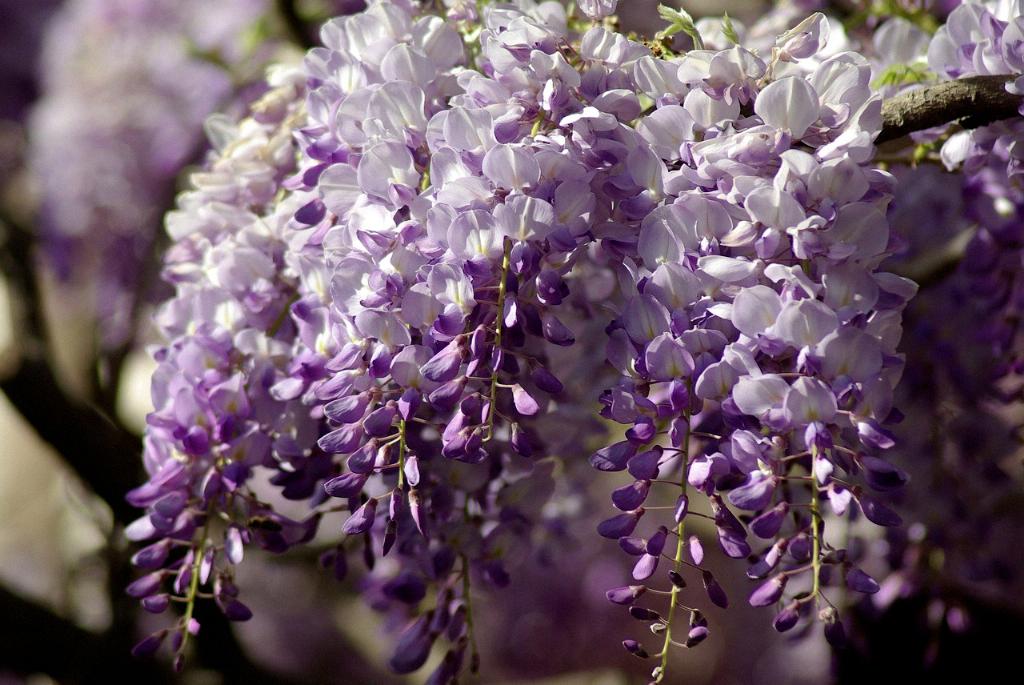Wisteria is a beautiful and popular flowering vine that can be grown from seeds with the right care and attention. If you’re looking to start wisteria seeds, here are some detailed steps to help you on your way.
Step 1: Seed Preparation
Begin by soaking the wisteria seeds in warm water for approximately 24 hours. This process helps to soften the seed coat and improve germination rates. After soaking, you can plant the seeds in a container or directly in a vacant space in your garden.
Step 2: Seed Viability Test
If you want to test the viability of the wisteria seeds before planting, you can take another approach. Soak the seeds overnight, then place them on a damp paper towel. Next, seal the seeds inside a plastic bag and store it in a warm location. Keep the paper towel moist and check the seeds weekly for several weeks to observe any signs of germination.
Step 3: Planting the Seeds
When planting the wisteria seeds, ensure the soil is well-draining and fertile. Dig a small hole, place the seed inside, and cover it with a thin layer of soil. Water the seeds gently and keep the soil consistently moist but not waterlogged.
Step 4: Providing the Right Environment
Wisteria seeds thrive in warm and sunny conditions. Ensure that the growing area receives plenty of sunlight throughout the day. If you’re planting indoors, consider using a grow light to supplement natural light.
Step 5: Seedling Care
As the wisteria seeds begin to germinate and grow into seedlings, continue to monitor their progress. Keep the soil moist, but avoid overwatering as this can lead to root rot. Provide support for the growing vines if necessary.
Step 6: Transplanting Seedlings
Once the wisteria seedlings have developed a strong root system and several sets of leaves, they can be transplanted into larger pots or directly into the garden. Choose a well-drained planting site with plenty of room for the wisteria vine to grow and flourish.
Step 7: Fertilizing Wisteria Seedlings
After transplanting, consider fertilizing the wisteria seedlings with a balanced, water-soluble fertilizer to provide essential nutrients for healthy growth. Follow the instructions on the fertilizer packaging for the best results.
Step 8: Pruning the Seedlings
Regular pruning is essential for shaping and training wisteria vines. Prune the seedlings to encourage bushier growth and remove any dead or damaged branches. This will help promote flowering in the future.
Step 9: Providing Support
As the wisteria seedlings continue to grow, they will need a sturdy support structure to climb and twine around. Install a trellis, arbor, or other support system to guide the vines as they mature.
Step 10: Watering and Maintenance
Continue to water the wisteria plants regularly, especially during dry periods. Monitor for signs of pests or diseases, and take action promptly if any issues arise. Mulch around the base of the plants to help retain moisture and suppress weeds.
Step 11: Patience and Persistence
Growing wisteria from seeds requires patience and persistence. It may take several years for the vines to mature and produce abundant flowers, but the results are well worth the effort. Enjoy the process of nurturing your wisteria plants and watching them thrive.
Step 12: Enjoying the Blooms
Once your wisteria vines have matured and bloomed, you can sit back and enjoy the breathtaking display of cascading flowers. Take pride in your gardening accomplishments and share the beauty of wisteria with friends and family.

